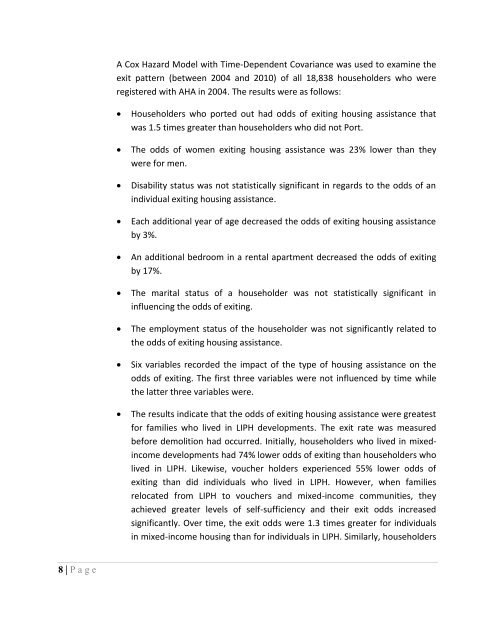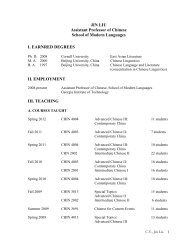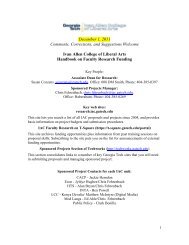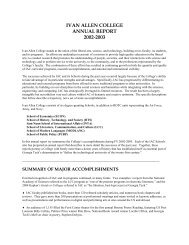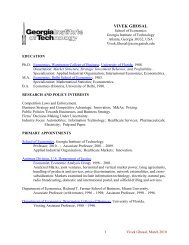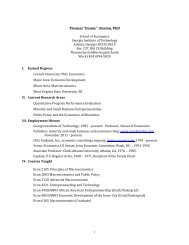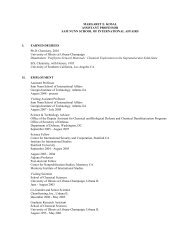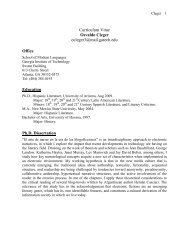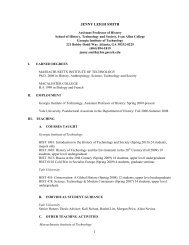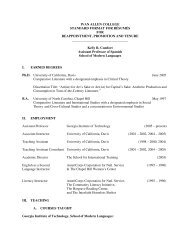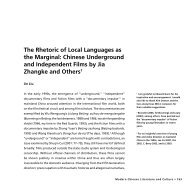Atlanta Housing - Georgia Institute of Technology
Atlanta Housing - Georgia Institute of Technology
Atlanta Housing - Georgia Institute of Technology
Create successful ePaper yourself
Turn your PDF publications into a flip-book with our unique Google optimized e-Paper software.
A Cox Hazard Model with Time-Dependent Covariance was used to examine the<br />
exit pattern (between 2004 and 2010) <strong>of</strong> all 18,838 householders who were<br />
registered with AHA in 2004. The results were as follows:<br />
<br />
<br />
<br />
<br />
<br />
<br />
<br />
<br />
<br />
Householders who ported out had odds <strong>of</strong> exiting housing assistance that<br />
was 1.5 times greater than householders who did not Port.<br />
The odds <strong>of</strong> women exiting housing assistance was 23% lower than they<br />
were for men.<br />
Disability status was not statistically significant in regards to the odds <strong>of</strong> an<br />
individual exiting housing assistance.<br />
Each additional year <strong>of</strong> age decreased the odds <strong>of</strong> exiting housing assistance<br />
by 3%.<br />
An additional bedroom in a rental apartment decreased the odds <strong>of</strong> exiting<br />
by 17%.<br />
The marital status <strong>of</strong> a householder was not statistically significant in<br />
influencing the odds <strong>of</strong> exiting.<br />
The employment status <strong>of</strong> the householder was not significantly related to<br />
the odds <strong>of</strong> exiting housing assistance.<br />
Six variables recorded the impact <strong>of</strong> the type <strong>of</strong> housing assistance on the<br />
odds <strong>of</strong> exiting. The first three variables were not influenced by time while<br />
the latter three variables were.<br />
The results indicate that the odds <strong>of</strong> exiting housing assistance were greatest<br />
for families who lived in LIPH developments. The exit rate was measured<br />
before demolition had occurred. Initially, householders who lived in mixedincome<br />
developments had 74% lower odds <strong>of</strong> exiting than householders who<br />
lived in LIPH. Likewise, voucher holders experienced 55% lower odds <strong>of</strong><br />
exiting than did individuals who lived in LIPH. However, when families<br />
relocated from LIPH to vouchers and mixed-income communities, they<br />
achieved greater levels <strong>of</strong> self-sufficiency and their exit odds increased<br />
significantly. Over time, the exit odds were 1.3 times greater for individuals<br />
in mixed-income housing than for individuals in LIPH. Similarly, householders<br />
8 | P a g e


